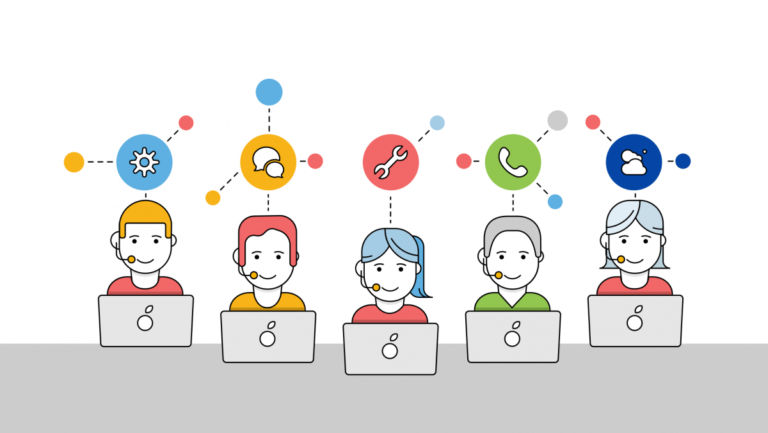A new survey into the UK’s shopping habits reveals one of the top customer bugbears is calling customer services and being passed from pillar to post around a call center. Research by Feefo, an online review platform, has revealed what customers like and dislike across the purchasing journey, and it’s not always a poor product or lack of choice.
While it’s no secret that excellent customer service and support are key to a company’s success, many firms are still falling short. Far too often it gets pushed down the priority list, especially during uncertain times. Whether customers are managing their finances, buying gadgets, or planning a holiday, everyone has to deal with customer services from time to time. An outstanding experience will encourage customers to keep returning to the brand – however, if they feel that they’ve been treated badly, it could put them off for life.

The survey of 2,000 UK shoppers found that for 30% of people, their biggest gripe across their purchasing journey is being passed between different call handlers or even across different call centers. Meanwhile, for 21% of respondents, their chief complaint is dealing with automated voice systems. The full list of customer gripes ranges from intolerable waiting times, confusing phone menus, and not being able to get the answer to their question.
But what is often at the heart of the problem is customers feeling ignored. A customer knows that if they go up to a member of staff in a shop to ask a question or make a complaint, they will get an instant response. Consumers expect the same regardless of how they communicate with the company – Feefo’s survey shows that 30% of customers expect only to have to wait 10 minutes to get a response after submitting a query; anything longer than that leaves them feeling disappointed.

Meanwhile, for some people, calling customer service can feel as if they are navigating an obstacle course of automated options, looped hold music, and being transferred from person to person. With far greater volumes of consumers reaching out to brands with questions than ever before, many communication channels cannot field such a large number of queries. Reaching a real live human who can effectively deal with their query can feel like a lottery for many consumers.
People don’t tend to make hasty decisions when making a purchase, but customer service can be a deciding factor. Feefo’s research reveals that 62% of people consider themselves to be cautious and conservative decision-makers who are not influenced by social media, advertising, or friends. However, consumers are becoming increasingly socially conscious, with 55% of people saying their purchasing decisions are affected by a company’s brand values.

Good customer service also extends to your brand’s website and online customer support, which is the modern solution to the limitations of the traditional customer service call center. Recent years have seen a huge surge in online questions asked by consumers across company websites and search engines. For 80% of customers, the Frequently Asked Questions page is where they will get most of the information they need. But not being able to easily and accurately find the answers to their queries can be a deal-breaker for some people. For 53% of online shoppers, not being able to find the answers to their questions on the website is the most common shopping frustration they’ve faced in 2024. But not everyone is satisfied with referring to an FAQ page, 43% of customers would rather have their queries answered by email.
Businesses that ignore these types of customer gripes do so at their peril. Even after just one disappointing customer experience, 30% of people say they will purchase from someone else next time. But even if a customer has selected their items, 79% of online shoppers admit to changing their mind and abandon their shopping cart before completing their purchase. High delivery costs are to blame, according to 63% of the customers surveyed.
This means a huge amount of money is being lost by businesses each year. But while certain issues such as slow shipping times or high delivery costs can be outside your control, you can still ensure customers receive friendly, attentive, and dedicated care when they contact your business. If you don’t, your business doesn’t just risk losing a customer, but your reputation could also be at stake.

Many shoppers pay close attention to how brands treat their customers. Customer reviews are often the first thing a potential customer looks at when deciding whether or not to buy from a brand. When customers are happy, they tend to talk about it. But when customers are unhappy, they will talk about it even more. With 72% of those surveyed saying they will likely leave a review after purchase, if they’ve had a bad experience, you can expect to receive a negative review. A negative review has become quite influential in undermining a business’ reputation; often leading to potential customers losing trust in a company which can be very hard to rebuild, and it can even impact the search engine ranking of the brand.
But it’s important to remember that an angry customer just wants to be heard, and even if it’s not possible to solve their problem immediately or entirely, just listening to them will go a long way. Customers who receive a tailored response to their complaints are more likely to think favorably of the company and purchase from them again.
Of course, giving customers fewer reasons to call is a good starting point. While a business cannot control every aspect of a sale, they can ensure that every customer receives the very best care and attention. Responding to customer queries quickly, politely, and knowledgeably will decrease your chance of getting a bad review and above all, keep your customers happy. Also listening and learning from your customers and then using this information to train your call handlers will help your business to develop a more personalized customer experience that is crucial to securing its long-term success.


